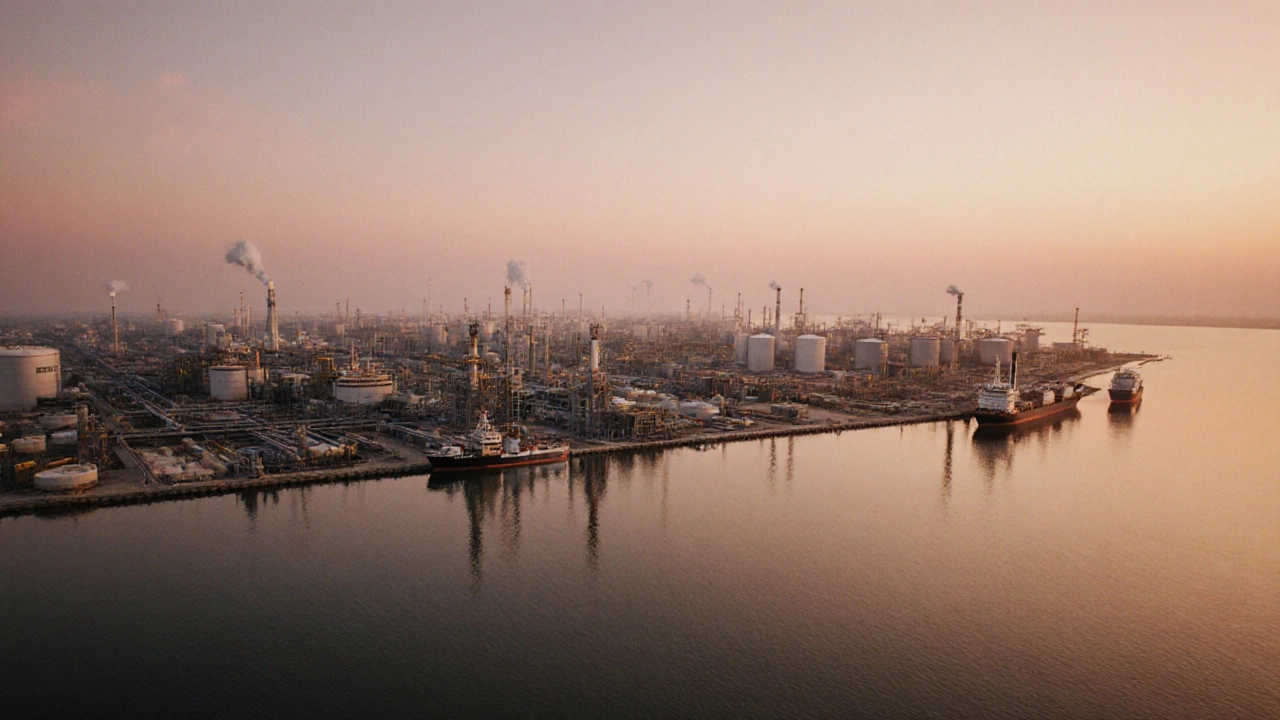Chemical Manufacturing City: Top Hubs in India and What Makes Them Tick
When we talk about a chemical manufacturing city, a concentrated industrial zone where chemical production, processing, and distribution are centered. Also known as chemical hub, it’s not just about factories—it’s about supply chains, skilled labor, policy support, and infrastructure working together. India’s chemical manufacturing sector is booming in 2025, and it’s not spread evenly. Some cities have become powerhouses because they’ve built the right ecosystem—ports, pipelines, power, and policies—all in one place.
One of the biggest players in this space is Vadodara, a major center for petrochemicals and specialty chemicals in Gujarat. It’s home to giants like Reliance and many smaller manufacturers that supply everything from dyes to pharmaceutical intermediates. Then there’s Jamnagar, where the world’s largest oil refinery sits, turning crude into feedstock for plastics, synthetic fibers, and industrial solvents. These aren’t random locations—they’re chosen because of deep-water ports, proximity to oil fields, and state-level incentives. Meanwhile, Dahej, a planned industrial corridor on the Gujarat coast, is rapidly becoming a go-to for export-focused chemical plants thanks to its dedicated infrastructure and customs zones.
It’s not just about geography. The chemical sector boom in India is fueled by government schemes like PLI for bulk drugs and specialty chemicals, rising domestic demand for agrochemicals and polymers, and global shifts in supply chains. Companies are moving out of China not just to save costs, but to find reliable partners with strong regulatory compliance. That’s why places like Haldia, in West Bengal, with its deep-water port and existing chemical clusters, are seeing new investments. Even smaller towns with good rail links and skilled labor pools are getting attention for niche chemical production.
What’s missing from the conversation? Many assume chemical manufacturing is all about big plants and heavy machinery. But the real story is in the details—the precision in handling hazardous materials, the automation in blending processes, the waste recycling systems that make these plants sustainable. India’s top chemical manufacturers aren’t just producing chemicals—they’re building systems that meet global safety and environmental standards.
Below, you’ll find a collection of posts that dig into exactly what’s driving this growth: which chemicals are in highest demand, which cities are expanding fastest, how policies are shaping investment, and what’s next for India’s chemical industry. No fluff. Just facts, data, and real-world examples from the frontlines of manufacturing.

Which City in India Is Famous for Chemical Industry? Top Chemical Manufacturing Hub Explained
Gujarat, especially Dahej and Jamnagar, is India's top chemical manufacturing hub, home to Reliance Industries and over 40% of the country's chemical output. Learn why this region dominates chemical production and exports.
